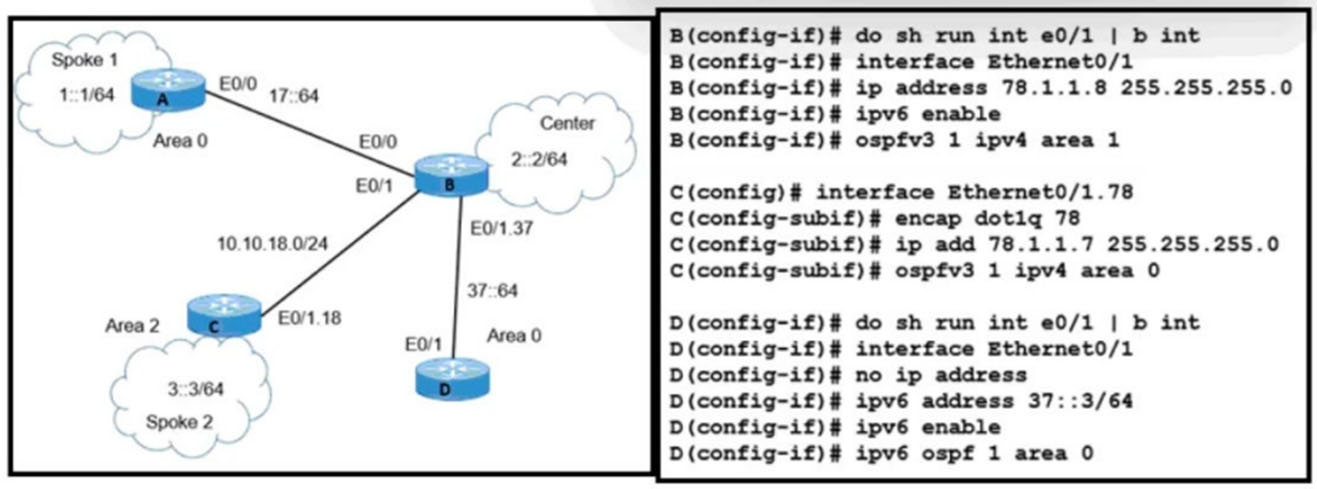
Refer to the exhibit. A network engineer receives a report that Spoke 1 users can perform bank transactions with the server located at the Center site, but Spoke 2 users cannot. Which action resolves the issue?
B
What is an MPLS LDP targeted session?
D
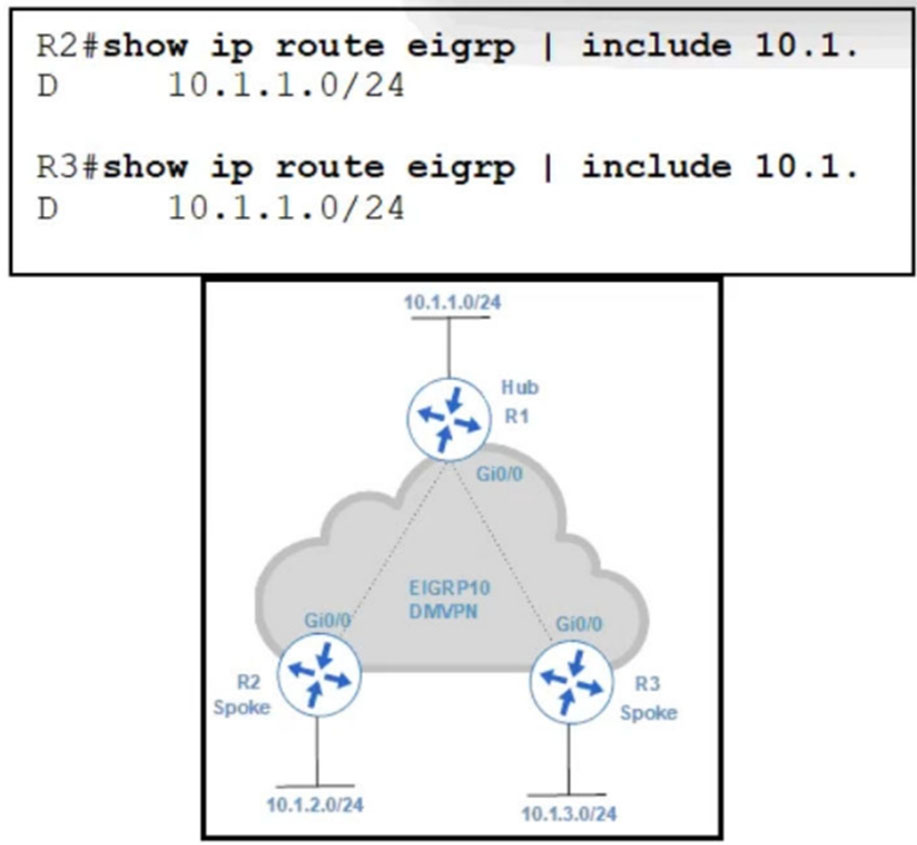
Refer to the exhibit. An engineer configures DMVPN and receives the hub location prefix of 10.1.1.0/24 on R2 and R3. The R3 prefix of 10.1.3.0/24 is not received on R2, and the R2 prefix 10.1.2.0/24 is not received on R3. Which action resolves the issue?
D
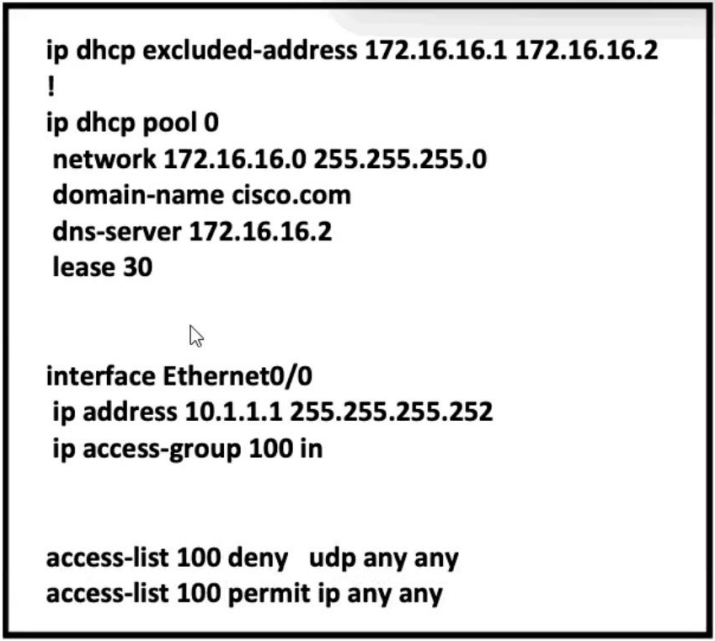
Refer to the exhibit. Which two configurations allow clients to get dynamic IP addresses assigned? (Choose two.)
AE
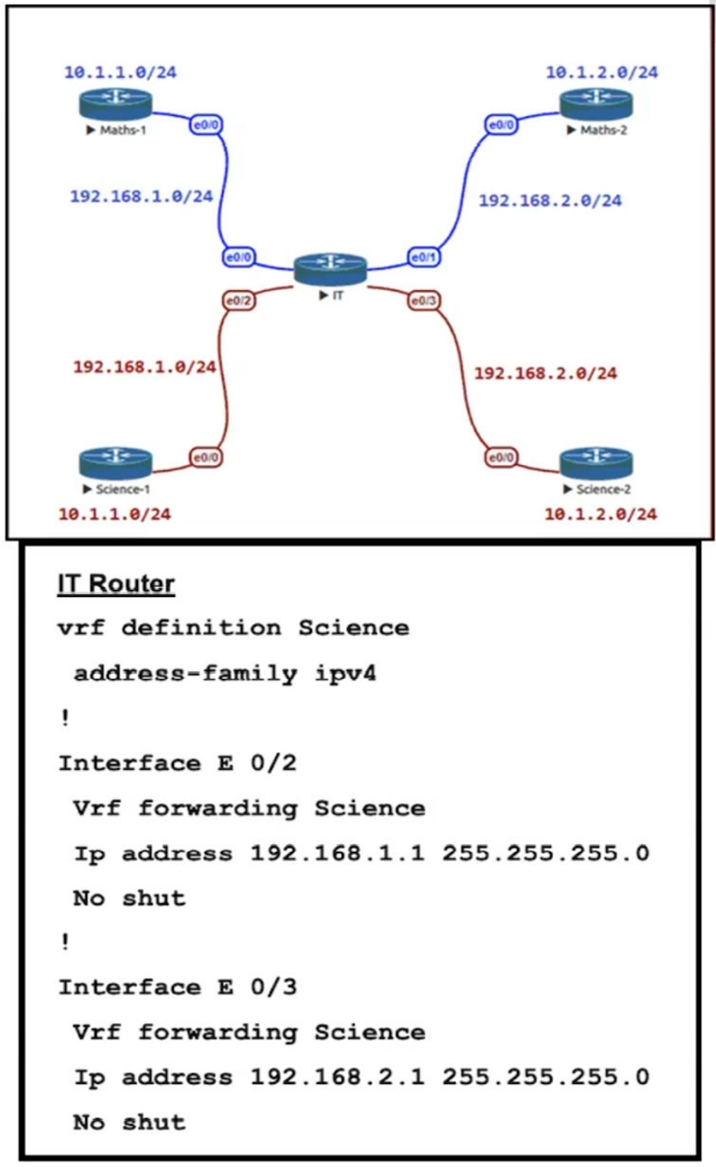
Refer to the exhibit. The IT router has been configured with the Science VRF and the interfaces have been assigned to the VRF. Which set of configurations advertises Science-1 and Science-2 routes using EIGRP AS 111?
A
An engineer must override the normal routing behavior of a router for Telnet traffic that is destined to 10.10.10.10 from 10.10.1.0/24 via a next hop of 10.4.4.4, which is directly connected to the router that is connected to the 10.1.1.0/24 subnet. Which configuration reroutes traffic according to this requirement?
C
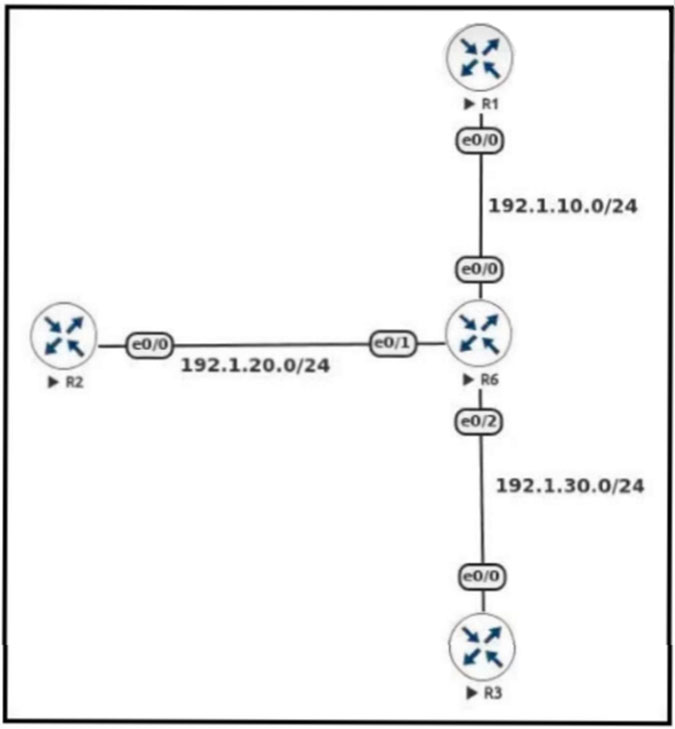
Refer to the exhibit. An engineer must configure DMVPN Phase 3 hub-and-spoke topology to enable a spoke-to-spoke tunnel. Which NHRP configuration meets the requirement on R6?
A
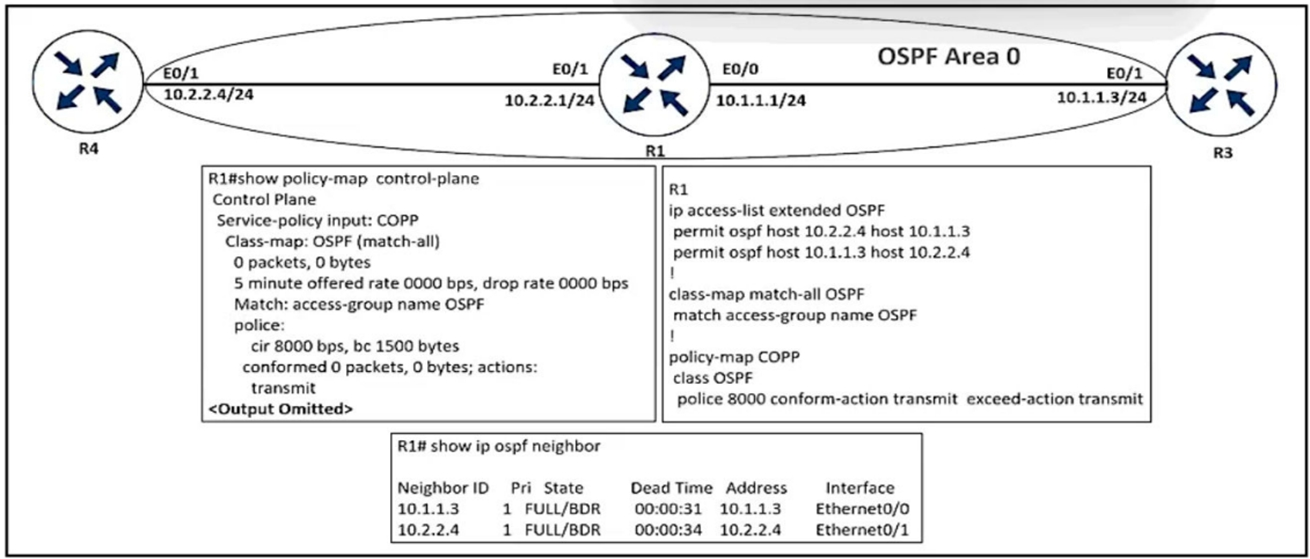
Refer to the exhibit. An engineer implemented CoPP but did not see OSPF traffic going through it. Which configuration resolves the issue?
C

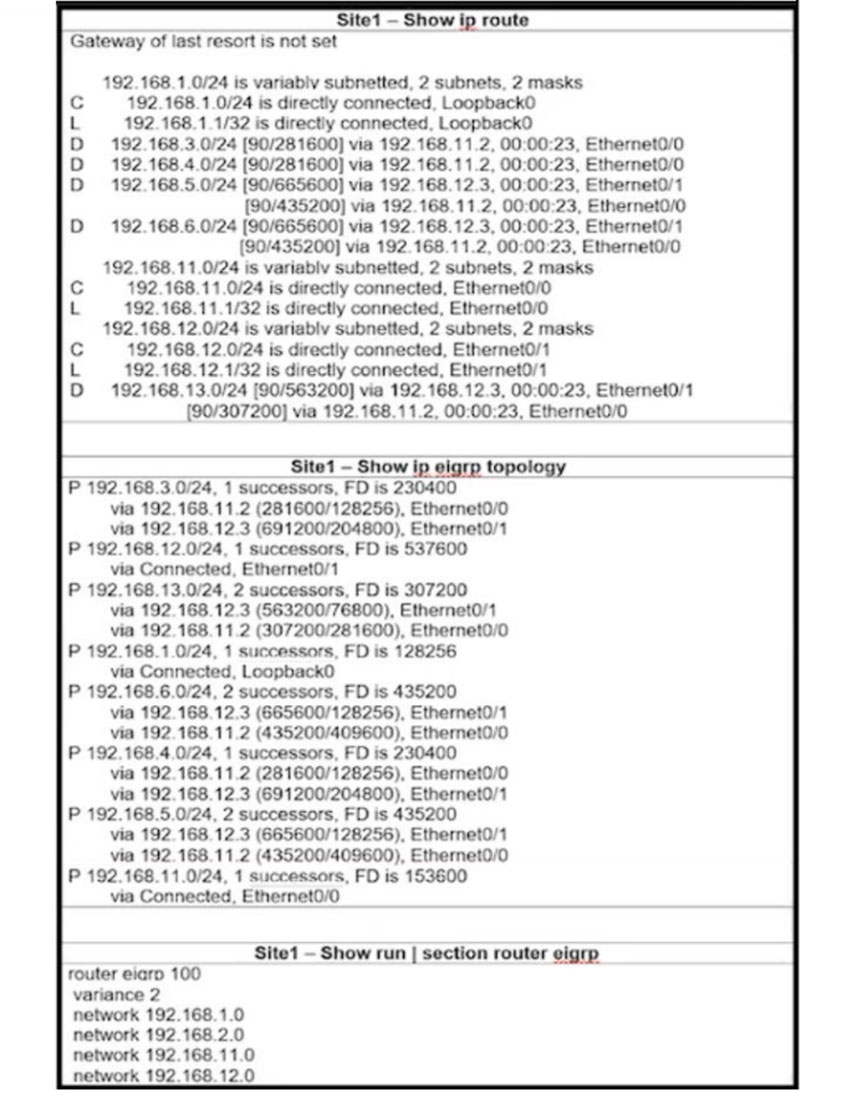
Refer to the exhibit. Site1 must perform unequal cost load balancing toward the segments behind Site2 and Site3. Some of the routes are getting load balanced but others are not. Which configuration allows Site1 to load balance toward all the LAN segments of the remote routers?
D

Refer to the exhibit. R1 and R2 use IGP protocol to route traffic between AS 100 and AS 200 despite being configured to use BGP. Which action resolves the issue and ensures the use of BGP?
B